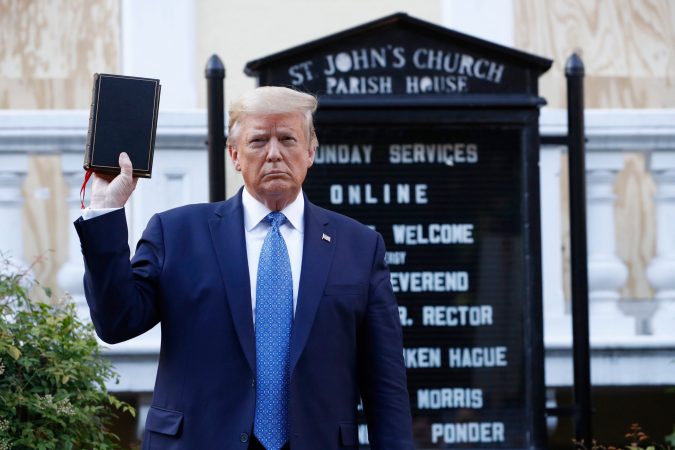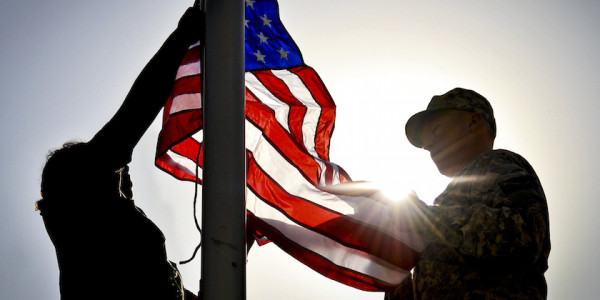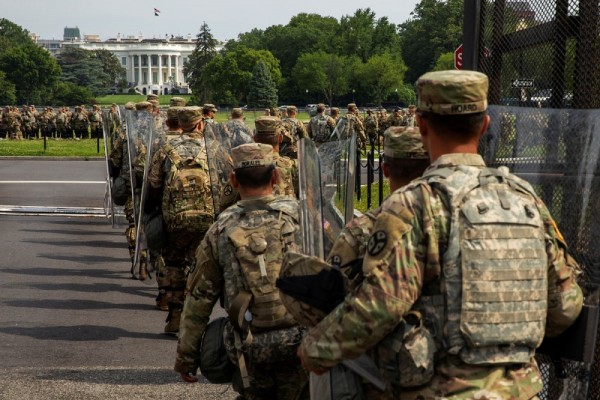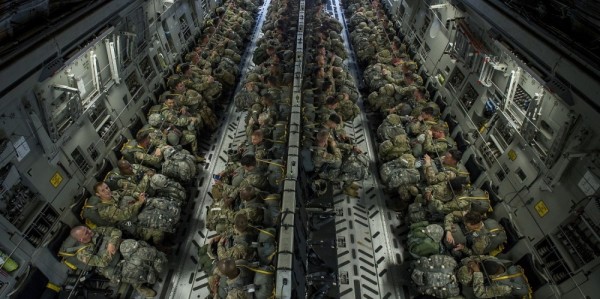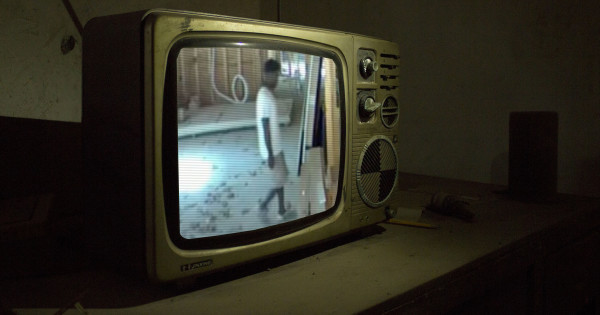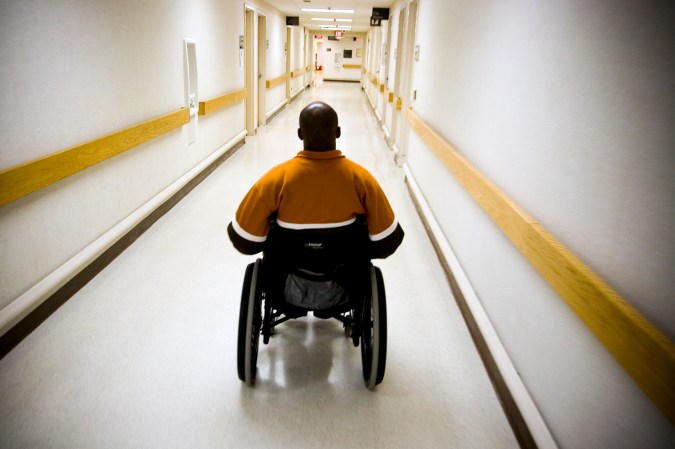It is increasingly likely that Russia will defeat Ukraine, but not in the manner that people predict.
Despite the inept performance of the Russian Army outside of Kyiv in February and March, Russian generals have found a way to generate combat power and slowly advance by exploiting their significant overmatch in artillery and rocket forces. The Russian offensive in the Donbas region has evolved into a grinding, high-tech World War I-style artillery duel.
Russian forces control most of the Donbas. If they seize the remainder, it will provide Vladimir Putin the opportunity to declare military victory — though not the absolute victory he sought initially — to his nationalist base, and to give his forces a much-needed rest. If the Russian Army is broken, as retired Gen. Jack Keane recently said, it would make sense for them to dig in, to assume a deliberate defensive posture – and for Putin to simply wait.
The ensuing military stalemate, on which news outlets report daily, is already prompting calls by NATO heads of state for a ceasefire in place, which, given the intransigence of Vladimir Putin, would equate to unilateral Ukrainian territorial concessions. While a cease-fire would allow Western leaders to refocus on domestic priorities and proclaim a tenuous peace, it would also compound Ukraine’s difficulties.
Territorial concessions and Ukraine’s economic viability are mutually exclusive to one another. Russian forces now control nearly all of Ukraine’s coastline to the outskirts of Odessa. Their navy controls the Black Sea, greatly reducing Ukraine’s export capacity. Ukraine has lost its off-shore petroleum reserves as well as those in Crimea and the Donbas. Its oil and gas reserves in the northeast are well within the range of Russia’s artillery and rocket fires. Only its oil and gas basin in the far west is secure. Much of Ukraine’s heavy industry has been destroyed.
Ukraine’s future economic viability, it would appear, rests upon its ability to retake territory lost since 2014. The tasks before its people — regain its coastline, reopen its ports, rebuild its infrastructure and industry, develop its energy reserves and resume its exports — are daunting. Accomplishment hinges on the availability of modern weapons in sufficient numbers not merely to hold current positions, but to retake territory lost since 2014.
Weapons provided by NATO member states this spring have afforded Ukraine the means to stabilize most of its frontlines. They were adequate for yesterday’s battles — but not for today, and certainly not for tomorrow. It no longer matters that the Russian army isn’t proficient in the coordinated use of infantry, armor, artillery, and air power — what we call combined-arms operations. Russian commanders now employ basic infantry tactics and their three-to-one advantage in personnel to press their attacks. But the linchpin to Russia’s current offensive, as Ukraine’s deputy of intelligence recently said, is that Russian artillery and rocket systems outnumber Ukraine’s by a ratio of between 10 and 15 to one, respectively.
No army, not even one as tenacious and courageous as Ukraine’s, can overcome such a numerical overmatch. The tragedy of this situation is that these facts are known to Ukrainian officials as well as U.S. and European leaders.
President Zelensky has repeatedly requested the U.S. Army’s HIMARS (High Mobility Artillery Rocket Systems) rocket launchers, which have a maximum range of 190 miles, in contrast with most artillery which has a range of between 18 and 25. Each launcher holds six rockets.

Knowing that Ukraine’s forces are woefully outranged and outgunned, the Biden administration recently shipped four HIMARS launchers. The provision of four units may make for a good headline, but does almost nothing to alter Russia’s overwhelming advantage in long-range firepower. Poland, in contrast, recently signed a letter of intent to purchase 500 such systems. This glaring mismatch makes it difficult not to conclude that U.S. support for Ukraine is tentative. The question is why?
The White House has repeatedly stated that the provision of modern weapons such as the HIMARS rocket launcher would be escalatory because it has the range to strike inside Russia. If Ukraine were a NATO member and Russia were using its own territory as a sanctuary from which to strike — exactly what it’s doing today — would the president sweep aside our longstanding Article 5 commitment and refuse Ukraine the weapons it requires? If the answer is no, then the U.S. should be providing those systems in sufficient numbers today. If the answer is yes, then the American defense commitment to Europe is meaningless.
This discussion goes well beyond the provision of HIMARS launchers. We can determine with great precision the number of Russian artillery and rocket batteries massed in eastern Ukraine and along the border. The art to all of this isn’t in the counting or the provision of weapons; it’s the anticipation of future requirements. Put another way, the HIMARS launchers, significantly more artillery, and every available means of targeting Russian forces and requisite training should have been in the pipeline months ago.
Armies at war, especially mechanized forces, consume unimaginable quantities of weapons, munitions, fuel, food, spare parts… everything. While our provision of military aid may look impressive on paper, the only metric that counts is who is winning.
The Alliance was created and exists to this day to defend Europe against Russian aggression. If we truly understood the full scope of Mr. Putin’s ambitions and the significance of Ukraine’s political geography — its borders with Poland, Slovakia, Hungary, Romania and Moldova — it’s possible Ukraine’s status as a nation outside the Alliance wouldn’t matter. We seem not to appreciate the larger truth: Ukraine is fighting NATO’s war.
Former Russian foreign minister Andrei Kozyrev stated months ago, and repeatedly since, that Vladimir Putin’s primary objective is to drive NATO forces from Eastern and Central Europe and reconstitute the Warsaw Pact. Earlier this week, Putin’s first prime minister, Mikhail Kasnayov, reiterated this point. Ukraine, while important for a multitude of reasons, is thus an intermediate objective. Our political leaders seem reluctant to heed their warnings. Doing so would entail a larger military commitment. But who on President Biden’s national security team, or anyone for that matter, has a better understanding of who and what Vladimir Putin is and what he seeks than Kozyrev and Kasnayov?

Ukraine finds itself in something worse than a precarious situation. Its leaders are painfully aware that battlefield victories depend on the continuous provision of increasingly sophisticated weapons, which the United States is reluctant to provide. And while Western leaders rhetorically support the full restoration of Ukrainian territory, they refuse to provide the means to accomplish the task. That said, Ukraine, for want of advanced Western arms, is in no position to impose terms. The President knows this. Putin’s terms would be harsh and straightforward: unilateral territorial concessions. A ceasefire would provide his army the opportunity to refit, retrain and reinforce — to prepare, as Kozyrev makes clear, for future offensive operations.
Is NATO prepared, following a ceasefire, to sustain Ukraine militarily and economically on an ongoing basis? If so, then it’s logical to provide them with the weapons they require now, while the Russian army is gasping for breath. If not, then it would appear that a ceasefire agreement, like President Nixon’s Paris Accord, would constitute NATO’s Ukraine exit strategy.
Clearly, we are entering that phase of the war that Ukraine’s leaders have long feared.
As fighting drags on, optimism and moral outrage fade, pressed aside by ongoing concerns about the coronavirus, sky-high inflation, crime, mass shootings, and racial tensions. People are tired. We desire some measure of pre-war normalcy. Ukrainians fear that desire, for it equates to Ukraine’s gradual abandonment. They’ve even coined a phrase for it: Ukraine fatigue.
However novel the term, Ukraine fatigue is merely the latest manifestation of a much larger problem within our society. In his 1978 commencement address at Harvard University, Alexander Solzhenitsyn spoke of our loss of civic courage, and intellectual and moral cowardice to stand for our beliefs. Instead of principle, our political leaders embrace the expedient. In a time of war, that means abandonment. The United States has a record of turning its back on beleaguered allies — South Vietnam, Iraq, the Kurds, Afghanistan – when it’s politically expedient to do so.
If we add Ukraine to that sad list of American defeats, it will, in due course, open the door to further conflict in Europe, demanding America’s direct involvement and make clear to our allies in the Pacific that our word is of no value. When people speak of Putin’s assault on the world order, Ukraine is the opening salvo.
Load the C-17s. Provide Ukraine with the weapons her soldiers require. Let’s get on with it.
+++
Lindsey Neas is a former Army armor officer. He served for 15 years as a defense aide for several members of the Senate and House Armed Services Committees.

